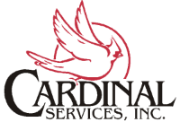The World of Employee Benefits is Evolving
Employees usually say that the most important things they want in a job first and foremost is a good-paying wage, along with “benefits.” The most common form of employee benefit is basic health insurance – with dental and vision still being an optional offering. Health benefits are still the gold standard by which many prospective employees judge a prospective employer. In a tight labor market, an employer will eventually need to offer some sort of access to health care insurance to compete. But the world of employee benefits is evolving—what constitutes a “benefit” is being redefined as the face of the workforce grows younger.
2019 Employee Benefits Report
To get an accurate overview of what the rest of the world is offering as an “employee benefit” and what employees are requesting—we need to look no further than the 2019 Employee Benefits Survey compiled by the Society for Human Resource Management [SHRM]. The annual survey examines more than 250 benefits that companies offer, or are requested by their employees. This survey was conducted in April of 2019.
Historically, this report has a reputation for being an accurate window on the trends that start from the top and trickle their way down to eventually impact small business owners. Why is it important to understand these trends? As the labor pool shrinks in America, competition for qualified workers will get fierce, even in rural areas. Rural or nonurban-centered employers will keep losing younger workers to urban areas as educated or trained candidates migrate towards better-paying jobs and better benefits.
Current Trends in Employee Benefits
While the top five listed below are the most popular requests and have already been implemented across the business world, others on the list are growing in popularity and may become standard benefit offerings within the next 10 years. The current trends are:
1. Employer match for 401(k) plans.
2. Cost of living adjustment in pay that is not dependent upon performance or seniority.
3. Flexible work schedules (can be remote, compressed work week, or customized hours).
4. Company-provided student loan repayment assistance which could include a 401(k) match for student loan repayments. [IRS has already allowed this.]
5. Childcare assistance programs including onsite childcare, or a childcare savings program funded by employee donations with matching contribution by the employer.
6. Elder Care Assistance and/or Emergency Family-Needs assistance programs.
7. Employer-provided paid time off for volunteering in the community.
8. Employee discount programs – employer-paid enrollment in a legal aid network, medical ambulance or med flight transportation program.
9. Disaster relief fund account (funded by employee donations matched by the employer).
10. Providing a standing desk to any employee who requests one. (This request may not be technically classified as a benefit, but is quickly becoming part of the modern workplace environment.)
Besides offering basic health benefits, expanding your company’s benefits program can help you retain and recruit the best and brightest talent thus giving your company an immediate competitive advantage in the marketplace.
Does your employee benefits program need a refresh?
If any of the benefits listed above appeal to you as an employer or you would like to offer a more proactive benefits program, give Cardinal a call (800) 342-4742. We can customize a benefits program that can be seamlessly integrated into your business.
